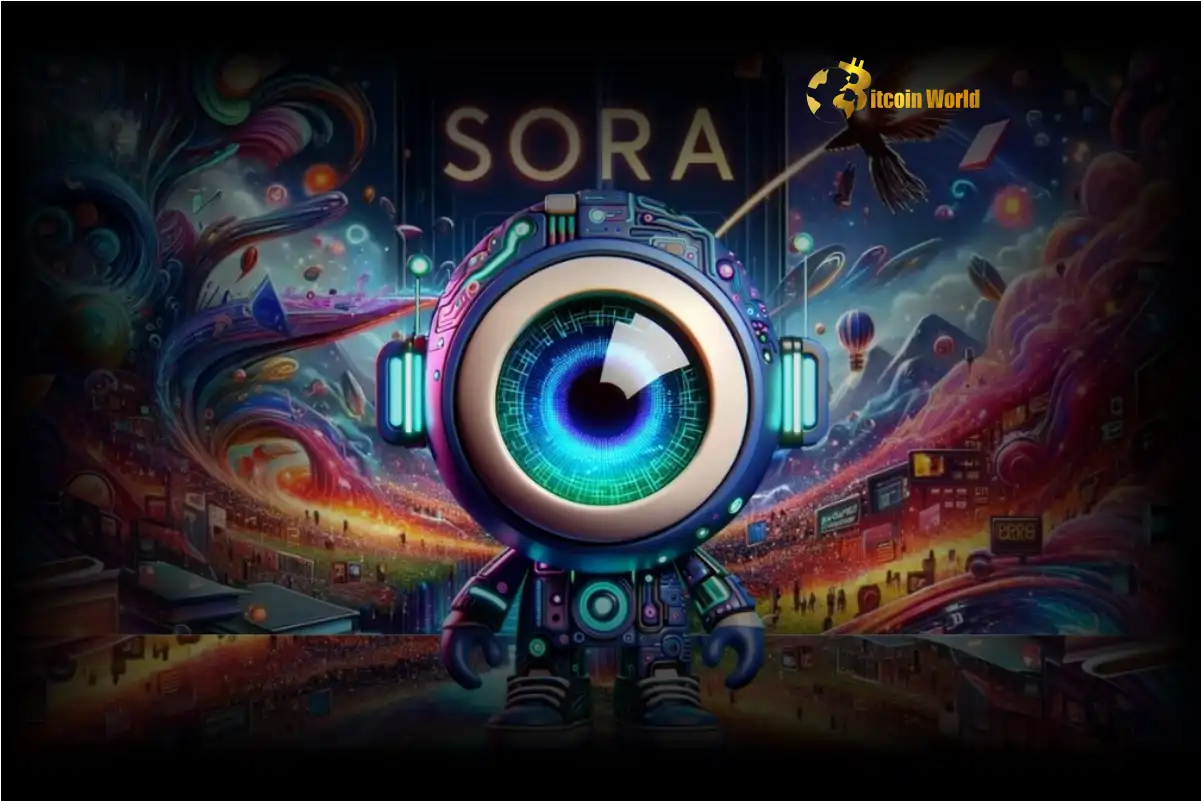Urgent Alert: OpenAI Sora Image Generation Halted for New Users Amidst Overwhelming Demand
0
0

The AI world is buzzing, and not entirely for celebratory reasons. Just days after the awe-inspiring launch of OpenAI’s image generation feature within Sora, a suite of powerful generative AI tools, new users are facing an unexpected roadblock. Citing overwhelming demand and persistent AI capacity challenges, OpenAI has temporarily disabled image generation for newcomers to Sora. For those in the cryptocurrency space who are keenly observing the intersection of AI and digital assets, this development underscores a critical point: even the most advanced technologies face growing pains as adoption surges. Let’s dive into what this means and why it matters.
Sudden Halt to Image Generation: What’s Happening with OpenAI Sora?
If you were excited to jump into Sora and explore its much-hyped image generation capabilities, especially after witnessing its Studio Ghibli-esque animation style recreations, you might be met with a temporary stop sign. OpenAI, in a recent update on their support pages, announced the suspension of image generation for new Sora users. The message is clear: “We’re currently experiencing heavy traffic and have temporarily disabled Sora video generation for new accounts. If you’ve never logged into Sora before, you can still generate images with Sora.” This might sound a bit confusing, but it essentially means if you’re a brand new user, the image generation feature is currently off-limits. Existing Sora users, however, seem to retain access, at least for now.
This sudden pause raises a few crucial questions:
- Unprecedented Demand: The sheer popularity of Sora’s image generation feature likely exceeded even OpenAI’s optimistic projections. The ability to create stunning visuals with simple text prompts has clearly captured the imagination of users globally.
- Infrastructure Strain: Running sophisticated generative AI models, especially for resource-intensive tasks like image and video creation, demands significant computational power. The current situation suggests that OpenAI’s infrastructure is struggling to keep pace with the user load.
- Rapid Growth Challenges: This incident highlights the inherent challenges of scaling AI services rapidly. Balancing innovation with infrastructure readiness is a tightrope walk for even tech giants like OpenAI.
CEO Sam Altman’s Take: “Haven’t Been Able to Catch Up”
Adding context to the situation, OpenAI CEO Sam Altman acknowledged the AI capacity crunch on social media platform X. He mentioned that the company “hasn’t been able to catch up” since the feature’s launch. Altman also praised the OpenAI staff for their tireless efforts, working late nights and weekends to maintain service availability. This candid admission from the top underscores the severity of the demand and the ongoing efforts to resolve the AI capacity bottleneck.
Why This Matters for the Crypto and AI Enthusiast
For those invested in the cryptocurrency world, this OpenAI situation is more than just a tech hiccup. It reflects broader trends and challenges within the rapidly evolving AI landscape that have implications for digital assets and decentralized technologies:
| Aspect | Implication for Crypto & AI |
|---|---|
| AI Capacity Limits | Demonstrates that even cutting-edge AI is resource-intensive. Decentralized solutions might offer alternative models for distributing computational load in the future. |
| Demand Surges | Highlights the immense user appetite for generative AI. This demand will likely drive further innovation and investment in both AI and related infrastructure, potentially including blockchain-based solutions. |
| Centralized Bottlenecks | The reliance on centralized platforms like OpenAI can create single points of failure or congestion. Decentralized AI initiatives could offer more resilient and scalable alternatives in the long run. |
| Innovation Pace vs. Infrastructure | The rapid pace of AI innovation needs to be matched by advancements in infrastructure. This creates opportunities for projects focused on decentralized computing, storage, and bandwidth solutions relevant to both AI and crypto. |
Looking Ahead: What’s Next for Sora and AI Capacity?
While the temporary suspension of image generation for new Sora users is a setback, it’s also a clear signal of the immense interest in generative AI and AI tools. OpenAI is undoubtedly working to expand its AI capacity to meet this demand. We can expect to see:
- Infrastructure Upgrades: OpenAI will likely invest heavily in expanding its server infrastructure and optimizing its AI models for greater efficiency.
- Gradual Re-enablement: As capacity improves, OpenAI will likely reintroduce image generation for new users, possibly in a phased manner.
- Long-Term Solutions: The industry as a whole will need to explore more sustainable and scalable solutions for deploying AI, potentially including decentralized approaches.
In Conclusion: A Sign of the Times
OpenAI’s temporary limitation on Sora’s image generation feature is a powerful reminder of the challenges and opportunities that come with the explosive growth of AI. For the crypto community, it reinforces the importance of exploring decentralized and scalable solutions to support the future of artificial intelligence. As AI continues to weave its way into various aspects of our digital lives, including the cryptocurrency ecosystem, understanding these infrastructure limitations and demand dynamics is crucial for navigating the evolving landscape.
To learn more about the latest AI market trends, explore our article on key developments shaping AI features.
0
0
 Manage all your crypto, NFT and DeFi from one place
Manage all your crypto, NFT and DeFi from one placeSecurely connect the portfolio you’re using to start.


